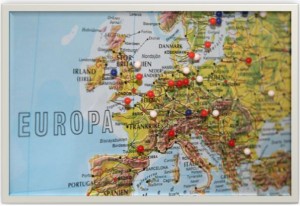 I’ve been lucky enough to visit Europe several times, and I lived in England and Italy for a while.
I’ve been lucky enough to visit Europe several times, and I lived in England and Italy for a while.
Europe has so many incredible landmarks, that it’s difficult to pick the best ones. However, I gave it a try (although I must confess that I have not been to all of these).
Below you’ll find 17 must-see landmarks in Europe. Add them to your wish list, bucket list, dream list, life list, or whatever you want to call your list of life goals.
Reminder: A life list–or bucket list–is a great tool for creating a life that rocks. Discover the transformational system for creating a life list and then turning it into reality. Click here to find out more.
 1. Visit the Eiffel Tower in Paris, France. Erected in 1889 as the entrance arch to the 1889 World’s Fair, the Eiffel Tower has become a global icon of France. It’s the tallest structure in Paris, and can be seen from all over the city. The Eiffel Tower’s three platforms are home to two restaurants, several buffets, a banquet hall, a champagne bar, and many gift shops.
1. Visit the Eiffel Tower in Paris, France. Erected in 1889 as the entrance arch to the 1889 World’s Fair, the Eiffel Tower has become a global icon of France. It’s the tallest structure in Paris, and can be seen from all over the city. The Eiffel Tower’s three platforms are home to two restaurants, several buffets, a banquet hall, a champagne bar, and many gift shops.
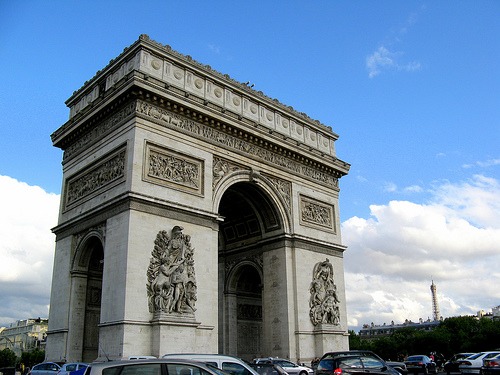 2. Visit the Arc de Triomphe de l’Étoile in Paris, France. The Arc de Triomphe stands in the center of the Place Charles de Gaulle, at the western end of the Champs-Élysées. Although it was commissioned in 1806 by Napoleon in order to commemorate his victories, it was not completed until 1836 during the reign of Louis-Philippe. The triumphal arch is adorned with many reliefs, most of them commemorating Napoleon’s battles.
2. Visit the Arc de Triomphe de l’Étoile in Paris, France. The Arc de Triomphe stands in the center of the Place Charles de Gaulle, at the western end of the Champs-Élysées. Although it was commissioned in 1806 by Napoleon in order to commemorate his victories, it was not completed until 1836 during the reign of Louis-Philippe. The triumphal arch is adorned with many reliefs, most of them commemorating Napoleon’s battles.
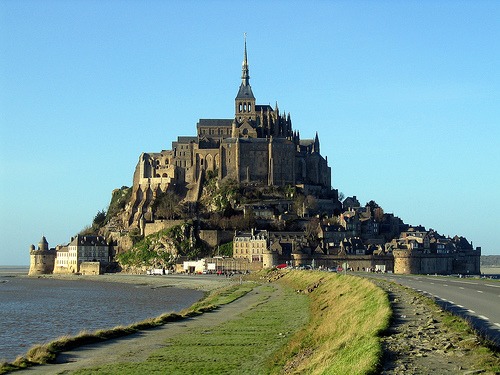 3. Visit Mont Saint-Michel –and its bay–near Normandy, France. Mont Saint-Michel is an easy day trip from Paris. It’s a Gothic-style Benedictine abbey dedicated to the archangel St Michael which is perched on a rocky islet in the midst of vast sandbanks. The abbey was built in the 11th century. A well-preserved medieval village is nestled at the bottom of the Mont-St-Michel geological mount.
3. Visit Mont Saint-Michel –and its bay–near Normandy, France. Mont Saint-Michel is an easy day trip from Paris. It’s a Gothic-style Benedictine abbey dedicated to the archangel St Michael which is perched on a rocky islet in the midst of vast sandbanks. The abbey was built in the 11th century. A well-preserved medieval village is nestled at the bottom of the Mont-St-Michel geological mount.
 4. Visit the Alhambra, a palace and fortress complex located in Granada, Andalusia, Spain. The Alhambra was built during the Moorish occupation of Spain, and it reflects the exquisite culture of the moors. The Alhambra’s Islamic palaces were built for the last Muslim emirs of the Nasrid dynasty. The Palace of Charles V, built in 1527, was inserted in the Alhambra within the Nasrid fortifications.
4. Visit the Alhambra, a palace and fortress complex located in Granada, Andalusia, Spain. The Alhambra was built during the Moorish occupation of Spain, and it reflects the exquisite culture of the moors. The Alhambra’s Islamic palaces were built for the last Muslim emirs of the Nasrid dynasty. The Palace of Charles V, built in 1527, was inserted in the Alhambra within the Nasrid fortifications.
 5. Visit El Escorial, a vast building complex located in the town of San Lorenzo de El Escorial, near Madrid, in central Spain. El Escorial is one of the Spanish royal sites and functions as a monastery, royal palace, museum, and school. It’s the most important architectural monument of the Spanish Renaissance. Construction of El Escorial began in 1563 and ended in 1584.
5. Visit El Escorial, a vast building complex located in the town of San Lorenzo de El Escorial, near Madrid, in central Spain. El Escorial is one of the Spanish royal sites and functions as a monastery, royal palace, museum, and school. It’s the most important architectural monument of the Spanish Renaissance. Construction of El Escorial began in 1563 and ended in 1584.
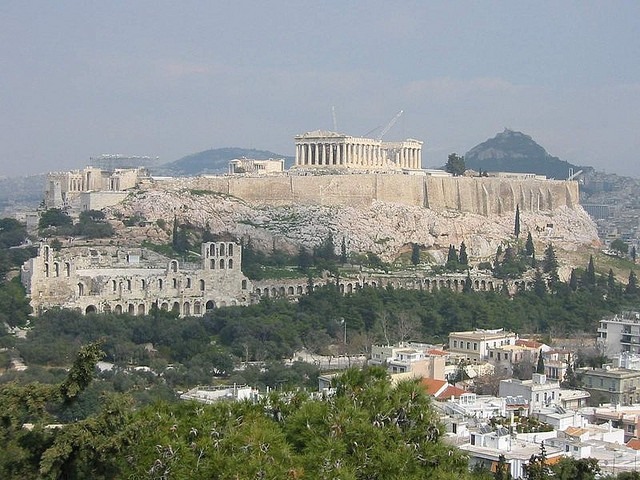 6. Visit the Parthenon on the Acropolis of Athens, in Athens, Greece. The Acropolis of Athens is an ancient citadel located on a hill of rock overlooking the city of Athens. It contains the remains of several ancient buildings of historical significance, the most famous being the Parthenon, a temple dedicated to the goddess Athena.
6. Visit the Parthenon on the Acropolis of Athens, in Athens, Greece. The Acropolis of Athens is an ancient citadel located on a hill of rock overlooking the city of Athens. It contains the remains of several ancient buildings of historical significance, the most famous being the Parthenon, a temple dedicated to the goddess Athena.
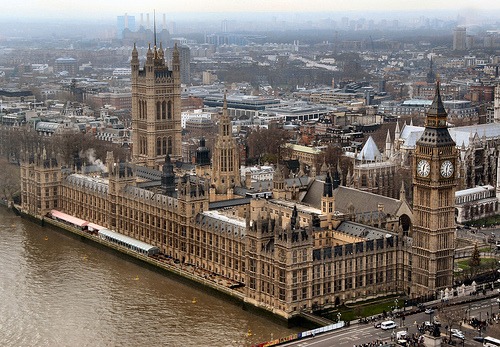 7. Visit the Big Ben and the Houses of Parliament in London, England. The Palace of Westminster is the meeting place of the House of Commons and the House of Lords, the two houses of the Parliament of the United Kingdom, It’s commonly known as the Houses of Parliament. The building’s famous tower is now called the Elizabeth Tower, although the structure has largely become synonymous with Big Ben, the heaviest of the five bells it houses.
7. Visit the Big Ben and the Houses of Parliament in London, England. The Palace of Westminster is the meeting place of the House of Commons and the House of Lords, the two houses of the Parliament of the United Kingdom, It’s commonly known as the Houses of Parliament. The building’s famous tower is now called the Elizabeth Tower, although the structure has largely become synonymous with Big Ben, the heaviest of the five bells it houses.
 8. Visit Buckingham Palace in London, England. Buckingham Palace became the official London residence of the British sovereigns with the accession of Queen Victoria in 1837. The last major structural additions were made in the late 19th and early 20th centuries, including the East front which contains the well-known balcony on which the Royal Family congregate to greet crowds outside.
8. Visit Buckingham Palace in London, England. Buckingham Palace became the official London residence of the British sovereigns with the accession of Queen Victoria in 1837. The last major structural additions were made in the late 19th and early 20th centuries, including the East front which contains the well-known balcony on which the Royal Family congregate to greet crowds outside.
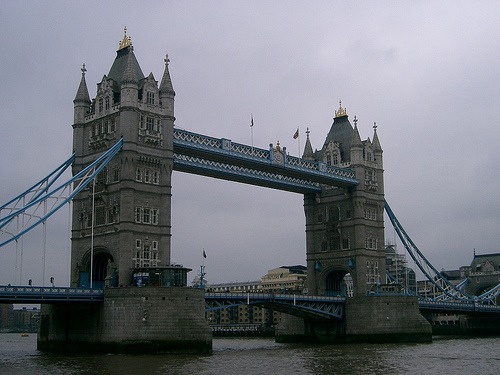 9. Visit the Tower Bridge in London, England. The Tower Bridge is close to the Tower of London, from which it takes its name. Built between 1886 and 1894, it was designed to be raised in order to allow ships to pass. The Tower Bridge offers fabulous views of London from its high-level walkway.
9. Visit the Tower Bridge in London, England. The Tower Bridge is close to the Tower of London, from which it takes its name. Built between 1886 and 1894, it was designed to be raised in order to allow ships to pass. The Tower Bridge offers fabulous views of London from its high-level walkway.
 10. Visit Stonehenge, a prehistoric monument in Wiltshire, England. Stonehenge is the remains of a ring of standing stones that were erected roughly 4500 years ago. There are many theories as to why Stonehenge was constructed but none have been confirmed. The biggest of its stones, known as sarsens, are up to 30 feet (9 meters) tall and weigh 25 tons on average. “Bluestones” weighing up to 4 tons were transported from Wales, 160 miles away. How these massive stones were transported is an enigma.
10. Visit Stonehenge, a prehistoric monument in Wiltshire, England. Stonehenge is the remains of a ring of standing stones that were erected roughly 4500 years ago. There are many theories as to why Stonehenge was constructed but none have been confirmed. The biggest of its stones, known as sarsens, are up to 30 feet (9 meters) tall and weigh 25 tons on average. “Bluestones” weighing up to 4 tons were transported from Wales, 160 miles away. How these massive stones were transported is an enigma.
 11. Visit the Admiralty Arch in London, England. The Admiralty Arch is a building which incorporates an archway with five arches providing road and pedestrian access between the Mall–the ceremonial road leading up to Buckingham Palace –and Trafalgar Square. The Admiralty Arch plays an important role on ceremonial occasions. There are now plans to turn it into a fashionable hotel.
11. Visit the Admiralty Arch in London, England. The Admiralty Arch is a building which incorporates an archway with five arches providing road and pedestrian access between the Mall–the ceremonial road leading up to Buckingham Palace –and Trafalgar Square. The Admiralty Arch plays an important role on ceremonial occasions. There are now plans to turn it into a fashionable hotel.
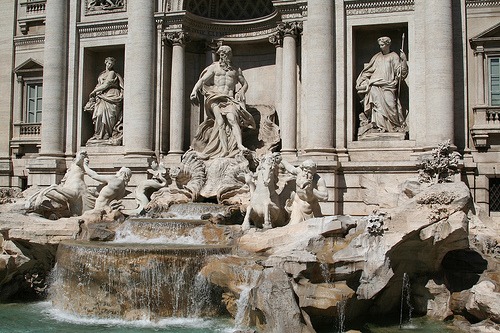 12. Visit the Trevi Fountain (Fontana di Trevi) in the Trevi District of Rome, Italy. Featured in the film, “La Dolce Vita”, the Trevi Fountain is the largest Baroque fountain in the city of Rome. Designed by Nicola Salvi in 1732, it depicts Neptune’s chariot being led by Tritons with sea horses. Tradition holds that if visitors throw a coin into the Trevi Fountain—with their back to the fountain–, they will return to Rome.
12. Visit the Trevi Fountain (Fontana di Trevi) in the Trevi District of Rome, Italy. Featured in the film, “La Dolce Vita”, the Trevi Fountain is the largest Baroque fountain in the city of Rome. Designed by Nicola Salvi in 1732, it depicts Neptune’s chariot being led by Tritons with sea horses. Tradition holds that if visitors throw a coin into the Trevi Fountain—with their back to the fountain–, they will return to Rome.
 13. Visit the Pantheon in Rome, Italy. Dating from 125 AD, the Pantheon is the most complete ancient building in Rome and one of Rome’s most spectacular sights. Although it was originally built as a temple to all the Roman gods (“pantheon” means “all the gods”), it is now a Catholic church.
13. Visit the Pantheon in Rome, Italy. Dating from 125 AD, the Pantheon is the most complete ancient building in Rome and one of Rome’s most spectacular sights. Although it was originally built as a temple to all the Roman gods (“pantheon” means “all the gods”), it is now a Catholic church.
 14. Visit the Coliseum, an elliptical amphitheater in the center of the city of Rome, Italy. The Coliseum was built approximately 2,000 years ago to host violent games–such as gladiatorial contest–which were a form of entertainment for the Romans of the time. It was capable of holding approximately 50,000 spectators. The Coliseum is considered to be one of the greatest works of Roman architecture and engineering.
14. Visit the Coliseum, an elliptical amphitheater in the center of the city of Rome, Italy. The Coliseum was built approximately 2,000 years ago to host violent games–such as gladiatorial contest–which were a form of entertainment for the Romans of the time. It was capable of holding approximately 50,000 spectators. The Coliseum is considered to be one of the greatest works of Roman architecture and engineering.
 15. Visit the Leaning Tower of Pisa, the campanile, or freestanding bell tower, of the cathedral of the Italian city of Pisa. The Tower of Pisa is famous for tilting toward one side. Although it was designed to be perfectly vertical, the Tower of Pisa started to lean during construction. The Tower of Pisa is one of the four buildings that make up the cathedral complex, called Campo dei Miracoli or Piazza dei Miracoli, which means Field of Miracles.
15. Visit the Leaning Tower of Pisa, the campanile, or freestanding bell tower, of the cathedral of the Italian city of Pisa. The Tower of Pisa is famous for tilting toward one side. Although it was designed to be perfectly vertical, the Tower of Pisa started to lean during construction. The Tower of Pisa is one of the four buildings that make up the cathedral complex, called Campo dei Miracoli or Piazza dei Miracoli, which means Field of Miracles.
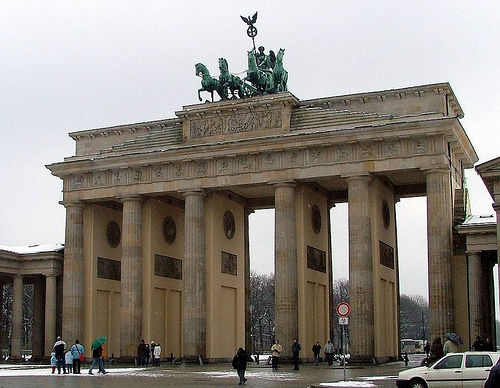 16. Visit the Brandenburg Gate in Berlin, Germany. It’s a former city gate which was rebuilt in the late 18th century as a triumphal arc symbolizing peace. During the Cold War, the Brandenburg Gate stood between East and West Berlin. It’s made of sandstone and is one of the finest examples of German classicism. There are six Doric columns on both sides which support the 11 meter-deep transverse beam and divide the gate into five passages.
16. Visit the Brandenburg Gate in Berlin, Germany. It’s a former city gate which was rebuilt in the late 18th century as a triumphal arc symbolizing peace. During the Cold War, the Brandenburg Gate stood between East and West Berlin. It’s made of sandstone and is one of the finest examples of German classicism. There are six Doric columns on both sides which support the 11 meter-deep transverse beam and divide the gate into five passages.
 17. Visit the Hungarian Parliament Building, the seat of the National Assembly of Hungary. It’s the most outstanding landmark on the Pest side of the Danube in Budapest, Hungary. Built in the Gothic Revival style, the Hungarian Parliament Building has a symmetrical facade and a central dome. The dome is Renaissance Revival architecture. When the parliament is not in session, the impressive interior of the Parliament Building can be visited.
17. Visit the Hungarian Parliament Building, the seat of the National Assembly of Hungary. It’s the most outstanding landmark on the Pest side of the Danube in Budapest, Hungary. Built in the Gothic Revival style, the Hungarian Parliament Building has a symmetrical facade and a central dome. The dome is Renaissance Revival architecture. When the parliament is not in session, the impressive interior of the Parliament Building can be visited.
Tweet This: These 17 European Landmarks are on my list of must-have experiences.
Conclusion
Live your best life by making a list of life goals that include everything that you want to see, do, and experience. You can find 10,000 ideas for your life list or bucket list here.


Related Posts:
- 16 Must-See Landmarks in Asia
- 10 Must-See Landmarks in North America
- Seven Must-See Landmarks in Central and South America
- 10,000+ Bucket List Ideas For Designing Your Best Life
Did you enjoy this article? Subscribe to “Daring to Live Fully” by RSS or by email, and get free updates.








 Marelisa Fabrega is a lawyer and entrepreneur. She holds a Bachelor of Science in Business Administration from Georgetown University in Washington, D.C., as well as a Juris Doctor from the Georgetown University Law Center. You can learn more about her
Marelisa Fabrega is a lawyer and entrepreneur. She holds a Bachelor of Science in Business Administration from Georgetown University in Washington, D.C., as well as a Juris Doctor from the Georgetown University Law Center. You can learn more about her 





